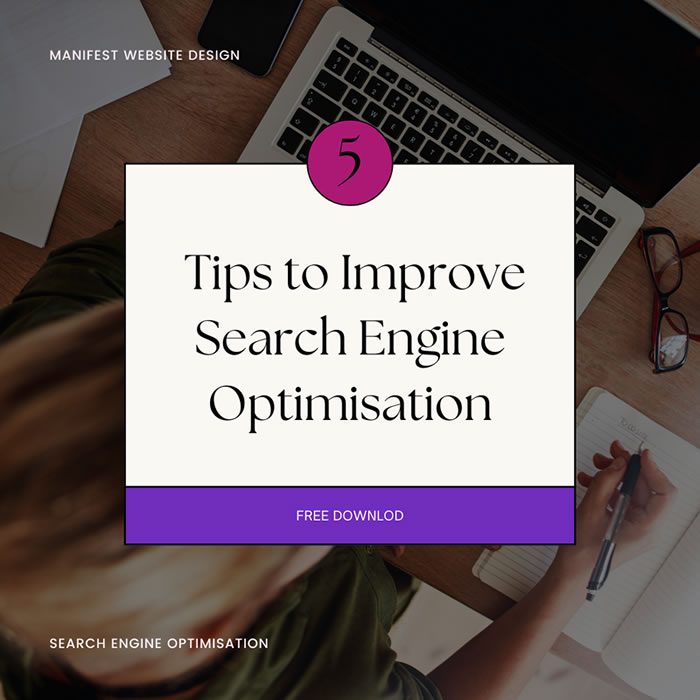How to Do Local SEO: Crafting a Winning Strategy in 2023
Published on May 15, 2023
At Manifest Website Design, we make a lot of content on a daily basis – from long-form blog posts, website landing pages, videos, social media graphics, onboarding documents, and so forth. Needless to say, I think we’re experienced enough to know a thing or two about creating content, but not just the type that attracts clients. We make great content that even search engine crawlers love to push up in the search results.
In today’s interconnected digital world, it’s all too easy to get swept up in the global nature of the internet, overlooking the power of local connections. If you’ve been neglecting local SEO in favor of chasing broader keywords and audiences, I’m willing to bet my bottom dollar that you’re missing out on a goldmine of opportunities right in your own backyard.
“So how do you do local SEO?” you might ask. The magic formula involves curating a robust strategy that zeros in on your audience, optimises your business profiles, and cements your bond with the community you serve.
If you’re all about supporting local businesses, might as well start with yours.
Your First Stop: Google My Business Listing
The first – and arguably the most important – step in creating a local SEO strategy is to optimise your Google My Business (GMB) listing.
It’s a free tool that allows you brand to appear more prominently in local search results. Start by claiming your GMB listing and following the verification instructions. Make sure all your information (e.g., business name, address, phone number, operating hours, website URL) is complete, accurate, and up-to-date.
Take advantage of GMB features such as posting regular updates, adding photos and videos, and managing reviews.
Pro tip: Responding to reviews professionally – whether the comments are praises or critiques – speaks volumes about your commitment to customer service.
How to Do Local SEO: 9 Tips to Skyrocket Your Google Rankings

1) Perform a Local SEO Audit
Before getting into the nitty-gritty of your local SEO strategy, it’s essential to perform a comprehensive site audit to determine where you stand in the market. Ask yourself, have you been competing with local businesses or leaving your fate to the SEO gods?
A local SEO audit entails examining various elements that impact your local search ranking:
- On-page SEO: Review your website content to ensure proper usage of geo-specific keywords and meta tags. Check your website’s NAP consistency.
- Off-page SEO: Analyse your website’s backlink profile, local citations, and social media presence. High-quality backlinks from authoritative websites and a strong social media presence boost your credibility and visibility in search results.
- Technical SEO: Does your website load quickly on all devices and browsers? Is it easy to navigate? Do you have a clear, logical architecture?
- User experience (UX): Get an unbiased opinion about your website’s design, ease of navigation, and overall experience. If users don’t feel good or intrigued after visiting your site, they’ll most probably not want to come back.
We offer complementary SEO site audits at Manifest Website Design – no obligations, no hidden strings. All for free. Let us help you understand your site better.
Related article: A Beginner’s Guide to Digital Marketing
2) Identify Geo-Specific Keywords
Geo-specific keywords are search terms that combine your core business offerings with your geographic location, ensuring your website ranks higher in local search results. Start by brainstorming a list of possible combinations that include your products, services, and location.
For example, if you own a bakery in Bowral (Australia), your geo-specific keywords might include “Bowral bakery,” “best pastries in New South Wales,” or “cupcakes in Southern Highlands.”
Sprinkle these keywords throughout your content, specifically in your titles, meta descriptions, header tags, and more.
Related article: Best Ecommerce Platforms For SEO (2023)
3) Encourage Customer Reviews on GMB Profile
Prospects want to know what your existing clientele says about you.
Encourage your customers to leave reviews on your GMB profile or other social media platforms. Keep in mind that a satisfied customer is more likely to share their positive experience with others.
Pro tip: A satisfied customer is a potential brand ambassador.
Be proactive in monitoring and responding to reviews, regardless of whether they are positive or negative. Thank customers for their feedback and address any issues or concerns raised in a professional and empathetic manner. By doing so, you demonstrate your commitment to customer satisfaction and build trust with potential clients who read these reviews.
4) Create High-Quality Local Content
Circling back to the local keywords you identified earlier, research the topics that resonate with your target audience and address their specific pain points. Create content (e.g., blog posts, articles, videos, infographics) revolving around these topics that are relevant to your market, industry, and location.
For instance, a local coffee shop could create content about the best coffee beans sourced from local farms or the impact of the coffee industry on the community. They could also interview customers about their favorite brew or memorable moments at the café.
Pro tip: Consider partnering with other local businesses to create co-branded content or guest posts.Collaborations like these can result in a mutually beneficial partnership that strengthens the online presence of all parties involved.
5) Add Location Pages
If your business operates in multiple locations, creating dedicated location pages is a crucial component of local SEO. Make sure to optimise each location page with relevant geo-specific keywords and include local content specific to each area, such as nearby landmarks or events.
For example, if you’re a tradie business in Australia’s Southern Highlands, we recommend creating separate location pages for Bowral, Mittagong, Moss Vale, and others. This way, when a customer searches for “tradie service + [location],” your brand pops up.
Pro tip: Embed a Google Maps widget on your location pages. Make it easier for customers to find you.
6) Follow SEO Best Practices
I could go on for hours about SEO best practices, but some of the most fundamental tips you should follow are:
- Use header tags (H1, H2, H3).
- Incorporate geo-specific keywords throughout your site’s content and code, but avoid keyword stuffing.
- Craft a diverse mix of short and long-form content to cater to different user preferences.
- Incorporate internal and external links.
- Be patient. SEO is a marathon, not a sprint. You’ll only notice the compounding benefits of SEO after 3 to 6 months.
7) Submit Business Information to Online Directories
These directories not only help improve your online visibility but also generate valuable backlinks, which are essential for boosting your search rankings.
Start by submitting your business information to major directories like Yelp, Bing Places, and Apple Maps.
Afterward, find local and industry-specific directories. Being an Australian-based business, we’ve made sure that we have a listing on The Fold Southern Highlands directory.
8) Create a Business Profile Everywhere
In addition to creating a Google My Business listing and submitting your information to online directories, create business profiles on popular social media platforms such as Facebook, Instagram, LinkedIn, and Twitter.
For example, a local flower shop might create a visually appealing Instagram profile to showcase their floral arrangements and attract new customers. Social signals (e.g., likes, shares, comments) can offer insights into the content your audience enjoys.
9) Participate in Local Events
This step is probably the one that requires the most amount of effort and time – but it’s incredibly rewarding.
If you want to make your brand the buzz of the town, you have to get involved in your community. Establish yourself as an integral part of the area. Participate in local events, sponsor community activities, and form lasting partnerships with other local businesses.
We’ve been in business long enough to say that in the world of entrepreneurship, it’s all about give-and-take.
Why You Should Make a Local SEO Strategy
Unless world domination is in your business plans, marketing to every human being on the planet isn’t practical.
When you optimise your website for local search, you have a better chance of outranking competitors and being discovered by potential clients in your area. You’ll also build trust within your community.
Related article: Need Great SEO Service in Australia?
Get More Foot – and Website – Traffic With Manifest Website Design’s SEO Services
When you invest in a winning local SEO strategy, you’ll be able to truly connect with your local community and build lasting relationships with your clientele. You’ll prove to people that you not only know what you’re talking about; you also know everything about who you’re talking to – your buyers’ pain points, aspirations, and even budget constraints.
At Manifest Website Design, we’re all about supporting local businesses and putting your brand on the map. We know that each brand is different. That’s why we pride ourselves on our ability to develop custom SEO marketing strategies that not only meet your needs but also exceed your expectations. Feel free to share your website goals with us anytime.

ANA AMISTAD
About the Author
Ana is a Content Manager at Manifest Website Design specialising in digital marketing, SEO, and meaningful stories. Her byline is often found 3,000 feet above sea level.
After hours, she enjoys psych thrillers, reading, dying in video games, and having good conversations. You can reach out to her on LinkedIn.








